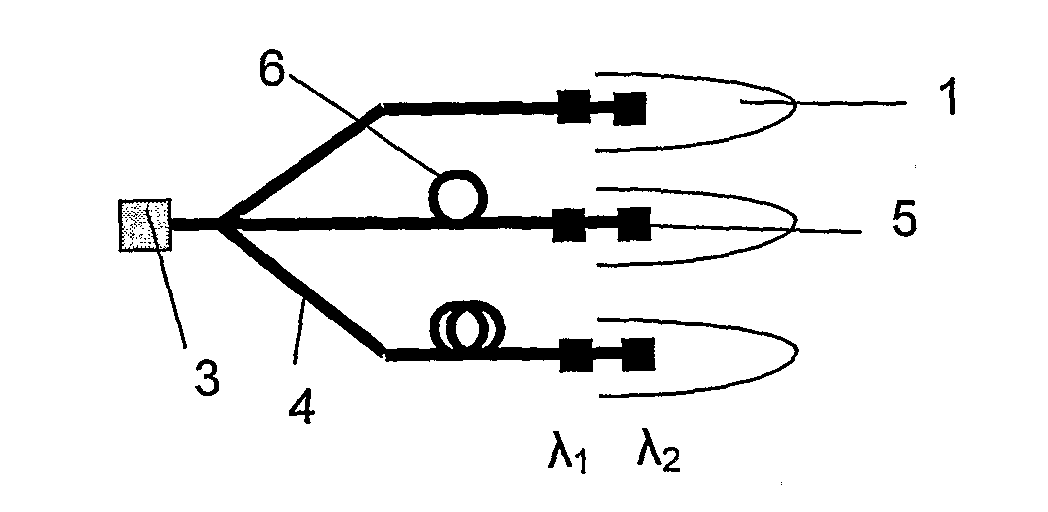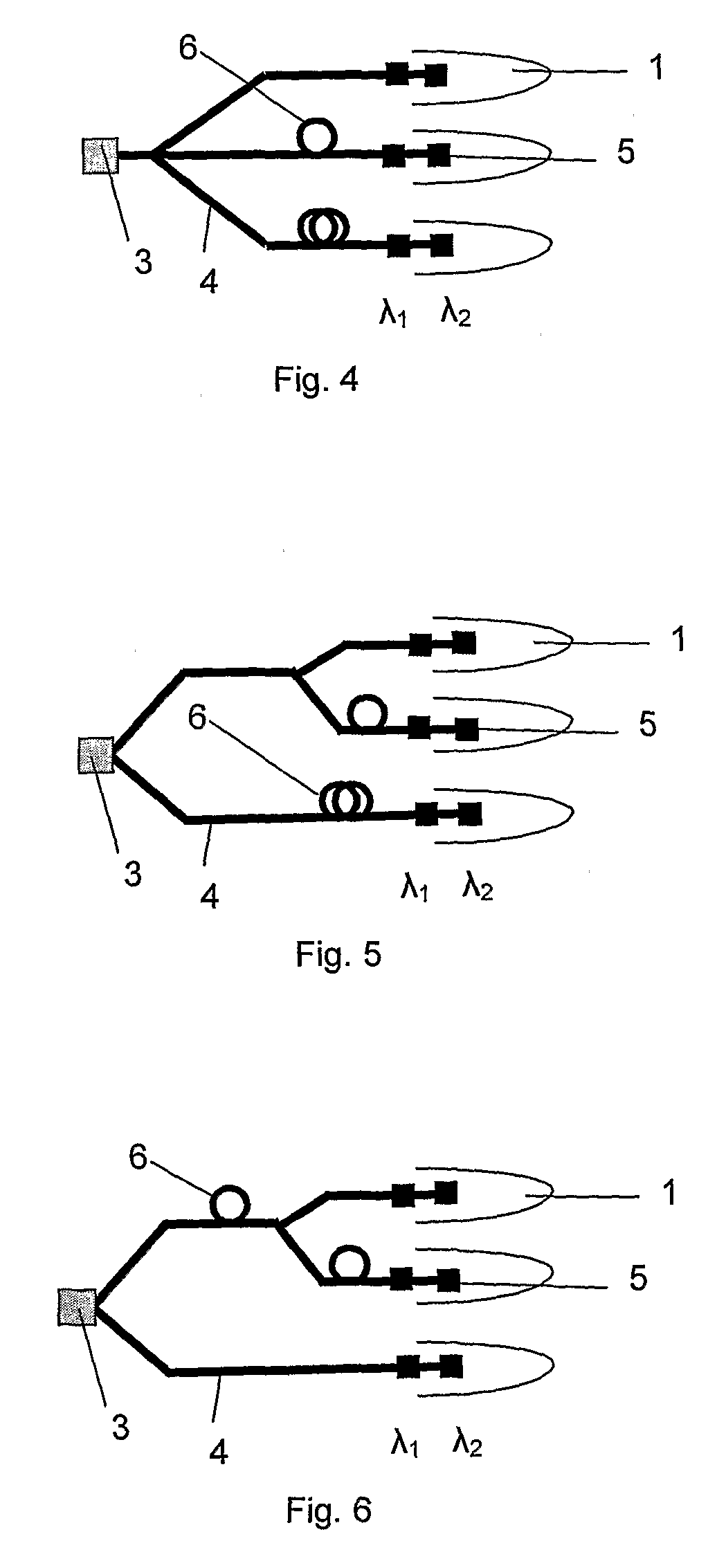Structural monitoring of wind turbine with fibre bragg grating sensors in each blade
a technology of fibre optic sensors and wind turbines, applied in the direction of propellers, propulsive elements, water-acting propulsive elements, etc., can solve the problems of significantly complicating the selection of blades for balancing turbines, affecting the maintenance of appropriate inventory, and affecting the selection of turbine blades
- Summary
- Abstract
- Description
- Claims
- Application Information
AI Technical Summary
Benefits of technology
Problems solved by technology
Method used
Image
Examples
Embodiment Construction
[0032]FIG. 1 is a schematic view of a wind turbine incorporating optical fibre strain sensors for structural monitoring. The turbine comprises three blades 1 connected to a hub 2. Located within the hub 2 is a data processing device (instrument) 3 which sends and receives pulses of light to and from optical fibre strain sensors 5 mounted to each of the blades 1. The optical fibre strain sensors 5 are connected to the instrument 3 by optical fibres 4. When the blades 1 flex in the wind, the resonant wavelength of the Bragg gratings forming the strain sensors 5 changes and from this change in resonant wavelength, the strain on the blade 1 can be determined.
[0033]A typical optical fibre sensor system uses wavelength division multiplexing (WDM) to accommodate the signals from each strain sensor 5 along the optical fibre 4. Each sensor in the same array is identified by its wavelength λ and must therefore have a different wavelength at all times from other sensors 5 in the same array. Tw...
PUM
| Property | Measurement | Unit |
|---|---|---|
| Length | aaaaa | aaaaa |
| Wavelength | aaaaa | aaaaa |
Abstract
Description
Claims
Application Information
 Login to View More
Login to View More - R&D
- Intellectual Property
- Life Sciences
- Materials
- Tech Scout
- Unparalleled Data Quality
- Higher Quality Content
- 60% Fewer Hallucinations
Browse by: Latest US Patents, China's latest patents, Technical Efficacy Thesaurus, Application Domain, Technology Topic, Popular Technical Reports.
© 2025 PatSnap. All rights reserved.Legal|Privacy policy|Modern Slavery Act Transparency Statement|Sitemap|About US| Contact US: help@patsnap.com



